Windows 11 brings a sleek new interface, but it also restricts some customization options that users enjoyed in previous versions, such as moving the taskbar to different sides of the screen. While the settings app doesn't offer a way to change the taskbar position, you can still move it to the top, left, or right of your screen by editing the Windows Registry. Here's how you can reposition the taskbar in Windows 11.
Move the Taskbar Using Registry Files
If you're not comfortable editing the Windows Registry manually, you can use pre-configured registry files to change the taskbar position with a few clicks. Here's how to do it:
Step 1: Download the registry files that will allow you to move the taskbar to your desired position. You can download them from the following link:
Download Windows 11 Taskbar Position Registry Files:
Win11_taskbar_position_registry_filesDownload
Step 2: After downloading the zip file, extract its contents to a folder on your computer. The extracted folder will contain four registry files:
- Taskbar_Left.reg: Moves the taskbar to the left side of the screen.
- Taskbar_right.reg: Moves the taskbar to the right side of the screen.
- Taskbar_Top.reg: Moves the taskbar to the top of the screen.
- Taskbar_Bottom.reg: Moves the taskbar to the bottom of the screen.
Step 3: Double-click on the registry file that corresponds to the position where you want to move the taskbar. For example, if you want to move the taskbar to the top, double-click on Taskbar_Top.reg.
Step 4: You might see a User Account Control dialog asking for confirmation. Click on Yes to allow the Registry Editor to make changes.
Step 5: A security warning may appear stating "The publisher could not be verified." Click on Run to proceed.

Step 6: When prompted with a confirmation dialog about adding information to the registry, click on OK.

Step 7: Finally, restart the Windows Explorer process or restart your computer to apply the changes.
To restart Windows Explorer:
Step 1: Press Ctrl+Shift+Esc to open Task Manager.
Step 2: In the Processes tab, scroll down and locate Windows Explorer.
Step 3: Right-click on Windows Explorer and select Restart from the context menu.
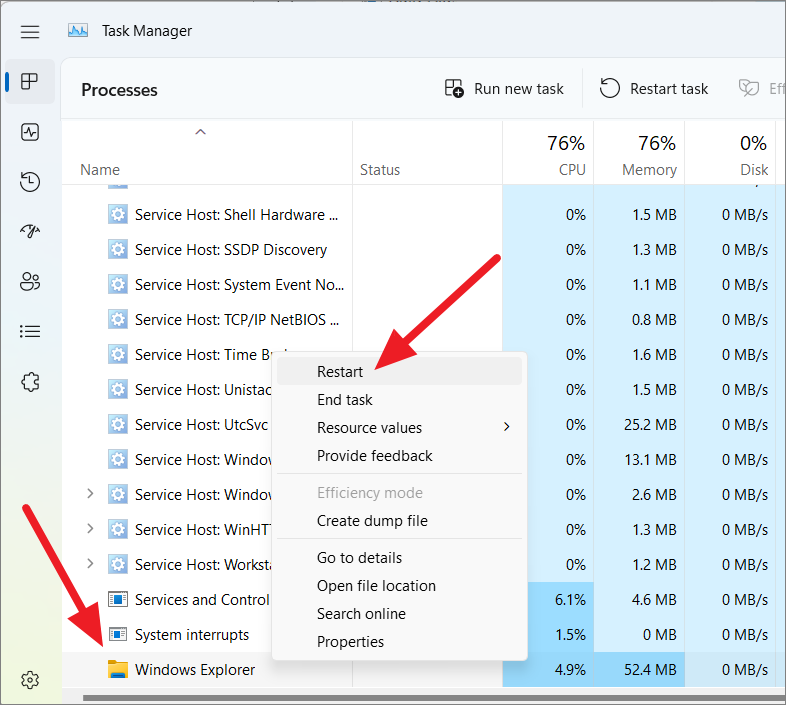
Your taskbar should now appear in the new position you selected.
Move the Taskbar by Manually Editing the Registry
If you prefer to customize the registry yourself, you can manually edit the registry value to reposition the taskbar. Follow these steps carefully:
Note: Editing the Windows Registry can be risky. Incorrect changes can cause system instability. It is highly recommended to back up the registry before making any changes.
Step 1: Open the Registry Editor. Press Windows+R to open the Run dialog box, type regedit, and click OK. Alternatively, click on the Start button, type regedit, and select Registry Editor from the search results.
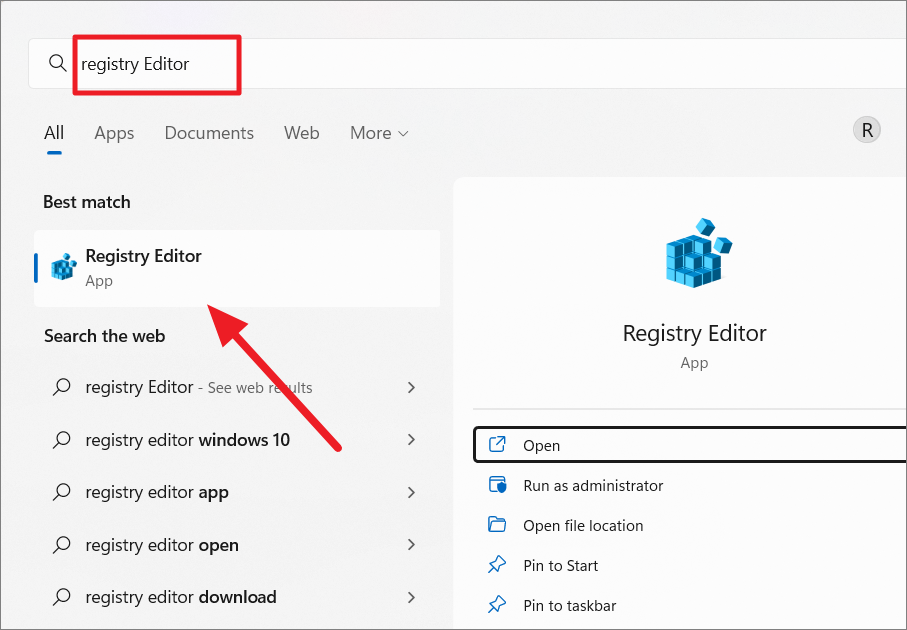
Step 2: Navigate to the following key in the Registry Editor:
Computer\HKEY_CURRENT_USER\Software\Microsoft\Windows\CurrentVersion\Explorer\StuckRects3Step 3: Before making changes, it's a good idea to back up the StuckRects3 key. Right-click on StuckRects3 in the left pane and select Export. Choose a location to save the backup file.
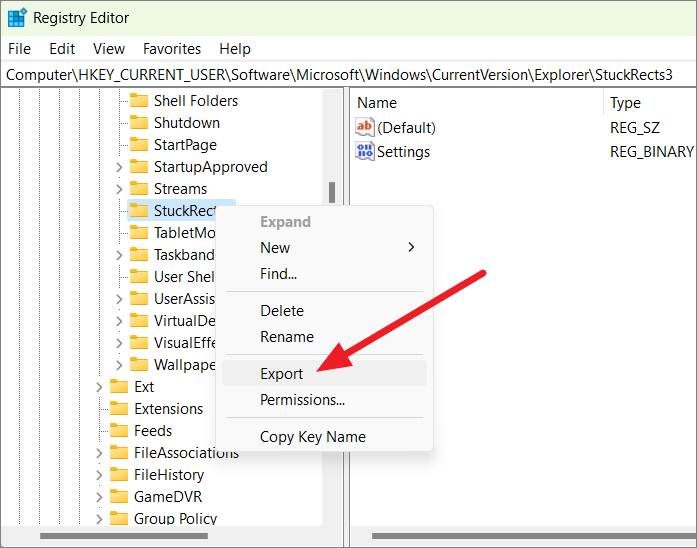
Step 4: In the right pane, double-click on the Settings binary value.
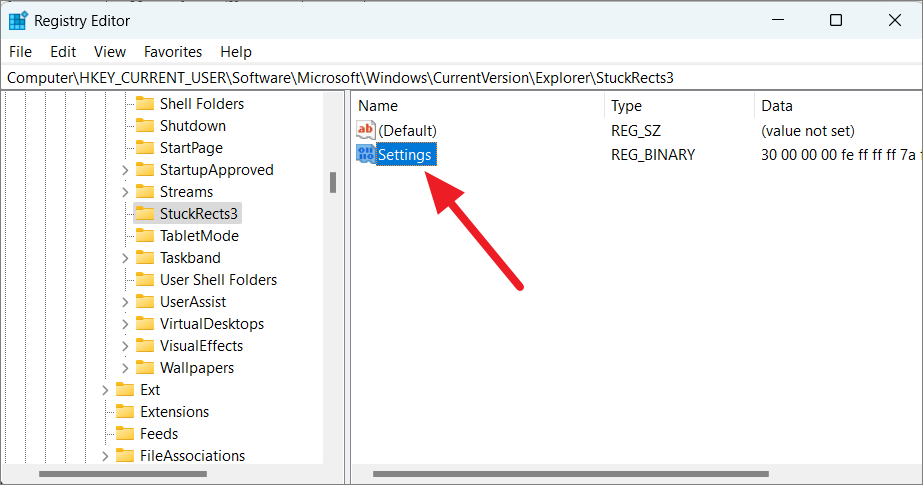
Step 5: In the Edit Binary Value window, locate the second row of data, and find the sixth value in that row. By default, this value is 03, which represents the taskbar at the bottom.

Step 6: Click on the 03 value to edit it. Press the right arrow key to position the cursor, then press Backspace to delete the value. Enter one of the following values to set the desired taskbar position:
- 00: Left side of the screen
- 01: Top of the screen
- 02: Right side of the screen
- 03: Bottom of the screen (default)
For example, to move the taskbar to the top, replace 03 with 01.
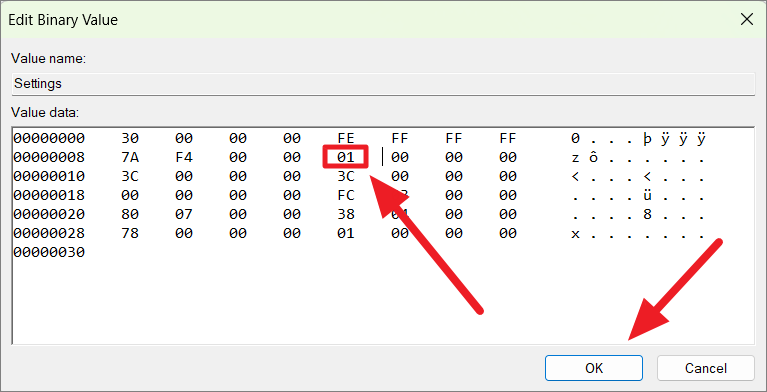
Step 7: Click OK to save the changes and close the editor.
Step 8: Restart the Windows Explorer process or reboot your computer to apply the changes.
To restart Windows Explorer, follow the same steps as before:
Step 1: Open Task Manager by pressing Ctrl+Shift+Esc.
Step 2: Locate Windows Explorer in the Processes tab.
Step 3: Right-click on Windows Explorer and select Restart.

Your taskbar should now be repositioned according to the value you set.
If you wish to return the taskbar to its default position at the bottom, change the value back to 03 and restart Windows Explorer or your computer.
By following these steps, you can customize the position of the Windows 11 taskbar to suit your preferences, restoring some of the flexibility from previous Windows versions.


